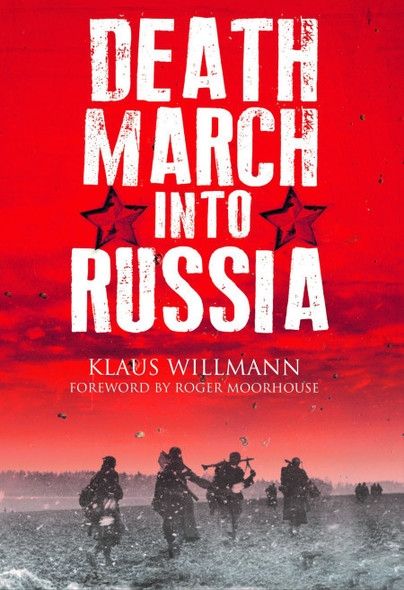| Title: | Death March into Russia |
| Writer: | Willmann, K. |
| Published: | Pen & Sword |
| Published in: | 2019 |
| Pages: | 204 |
| Language: | English |
| ISBN: | 9781784385033 |
| Description: | During World War II, many soldiers were taken prisoner by the enemy, both on the battlefield or after fighting had taken place. The states that took these soldiers prisoner had then to care for, feed and shelter them. The allies were unprepared for the number of captured German soldiers, particularly towards the end of World War II, when large numbers of German soldiers surrendered or were taken prisoner. For these soldiers, however, becoming a prisoner of the Soviet Union was especially feared.
In this real-life story, Lothar Herrmann, who took part in the war as Gebirgsjäger (mountain infantryman), shares his experiences as a prisoner of the Soviet Union. Before the war, Hermann had trained as a house painter, and fell in love with the mountains of southern Germany: he signed up as Gebirgsjäger because of his passion for mountaineering and hiking, among other things. After the German invasion of the Soviet Union, he became seriously ill and obtained an administrative function at a training centre. In March 1944 he was, however, sent to the front in Romania. After the Romanians switched sides in 1944, Hermann retreated with his unit, until he and his fellow soldiers were eventually taken prisoner by Romanian troops. Afterwards, Hermann became a Soviet prisoner and spent time in several camps, where he had the good fortune to be put to work in his occupation as a painter, instead of toiling in the mines. Finally released in October 1949, Hermann returned to his cherished mountains, where he settled and returned to his work as a painter.
The author's experiences give insight into a unique period, namely that of his time in Russian captivity. In the camps, the prisoners were put to work, bringing out differences in individuals’ characters. There were those who worked extremely hard for the Soviet Union in the hope of being able to return to Germany sooner. Other prisoners cared only for themselves and paid no attention to the problems that this caused. Some Soviet guards were indifferent to the fate of the German prisoners of war, while others experienced almost exactly the same conditions as those in captivity. The end of the book is also noteworthy for its evidence that Herrmann indirectly contributed to the space programme of the Soviet Union. From the account presented, it is clear that the post-war years were also difficult for the inhabitants of the Soviet Union, due to the fact that there was simply not enough to eat. The guards sometimes had scarcely any more food than the prisoners.
It is notable that this book, that at first appears to be an autobiography, is not about Klaus Willmann, but Lother Herrmann. Klaus Willmann is only an intermediary between the public and Hermann, the narrator. Through Willmann's work, Hermann's experiences have been made accessible to a wider public. Through his role as author, Willmann undoubtedly influenced Herrmann's narrative, for example through his choice of questions and occasional requests for clarification. It would have been interesting to have some more explanation about this process as it is unclear, for example, to what extent critical questions have been posed. There is also little attention given to Hermann's life before he entered military service. It is apparent that the veteran is not always entirely articulate, which would indicate that it would have sometimes been difficult for Klaus Willmann to get his experiences on paper. The book also does not contain any photos, the addition of which would have enriched the work.
The book provides a glimpse into the life of a German soldier after he is taken prisoner, and the reflections of that soldier. Careful attention is paid to his experiences and the circumstances through which he and other prisoners lived. By relaying these experiences, the book provides a interesting contribution to the historiography of German prisoners of war in the Soviet Union. |
| Rating: |     Very good Very good |
Information
- Translated by:
- Tomas Brogan
- Article by:
- Samuel de Korte
- Published on:
- 04-10-2020
- Feedback?
- Send it!




